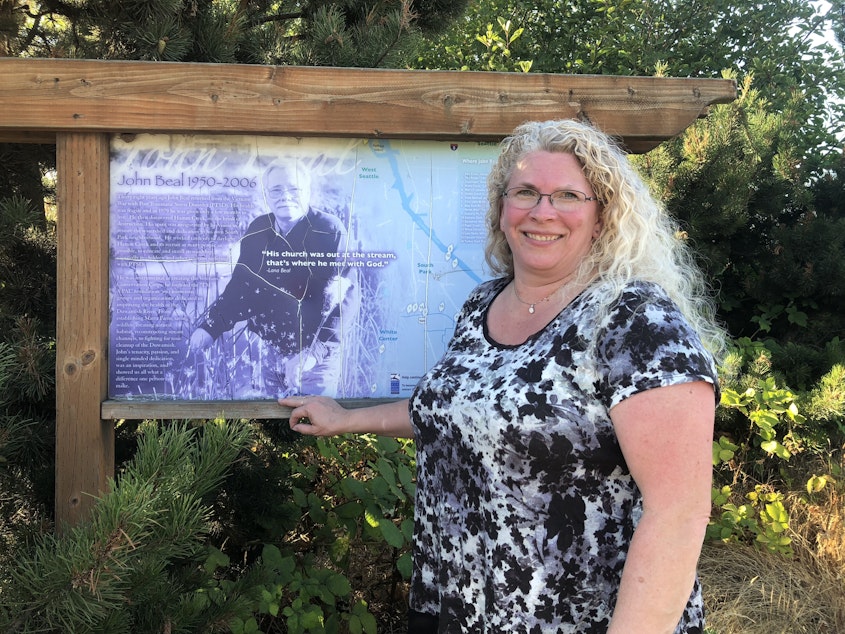He was a veteran with four months to live. This is how he restored Hamm Creek
If you knew that you only had four months to live, what would you do?
After suffering three heart attacks, John Beal was told that he was going to die. He decided to use the rest of his life to clean up Hamm Creek, an offshoot of the Duwamish River so polluted the water was yellow.
That decision changed the course of John's life and transformed Hamm Creek.
W
hen John Beal returned home from fighting in the Vietnam War, he seemed "somewhat lost," his daughter, Liana Beal, said. “He did not get a hero’s welcome.”
He settled in Seattle with his family, and in one year, he had three heart attacks.
“I ended up in the V.A. hospital,” John said in an archival video, “and I was diagnosed there with PTSD from Vietnam. I went to my own doctor, and he said, ‘Yeah, you’ve got about four months to live, and it’s going to be a very painful death. I recommend you get a hobby.’”
Liana said her father walked to Hamm Creek, which runs through the neighborhood of South Park. He “just kind of sat and contemplated, trying to figure out what he was going to do.”
Sponsored
This wasn’t the end of John Beal’s story, but the beginning.
“While he was sitting there,” Liana said, “he saw how polluted it was. It was near a sewage site, and there was a lot of debris.”
Liana remembers when her family first moved there, kids warned them to not go into the river or they would get rashes. When the tide was out, they could see cars, refrigerators, washing machines, and dead fish.
Liana said, “He thought, well, I did a lot of damage in Vietnam, so why not clean up where I am now before I pass?”
John started by removing the trash strewn in the small portion of the creek he could get to. But he couldn’t clean up the rest of the creek because it was flowing through underground pipes. The lack of open water destroyed all animal life around the stream, and the metal pipes got too hot for salmon to travel through.
Sponsored
Hamm Creek was as close to death as John Beal.
The thing about cleaning up a river is that for every step you take, a new step arises. John removed the trash, then realized he would have to remove the underground pipes—a process that's known as daylighting a river. When that was done, he realized the creek was still insanely polluted. He had even more work to do.
“It started out as a hobby, it became a habit, and it’s now a way of life,” John said.
The task sounds monumental, but John had a mantra, a system, that pushed him through: “Just stop where you’re at, start at your feet, and go from there.”
Today, groups like the Duwamish Alive Coalition and the People for Puget Sound celebrate John Beal’s work.
Sponsored
“I was told the first year that I took this job on that you can’t change it, you’ll never bring it back to what it was,” John said in a video. “Well, it is restored.
“You can do anything you want if you possess an idea with a passion. If you pursue that, and if you stick with it long enough, you’ll change the world.”
“He was hoping people would continue it when he left,” Liana said, “which is part of why he asked me to help him when he passed. He didn’t want the cleanup of the stream and the river to die with him.”
John Beal passed away in 2006.
He lived 27 years longer than the four months given to him. The river, and his love for it, extended his life.
Sponsored
It’s hard to argue that John Beal is really gone, because Hamm Creek remains.

This story was created in KUOW's RadioActive Intro to Journalism Workshop for 15- to 18-year-olds at Jack Straw Cultural Center, with production support from Mary Heisey. Edited by Carol Smith.
Find RadioActive on Facebook, Twitter and Instagram, and on the RadioActive podcast.



